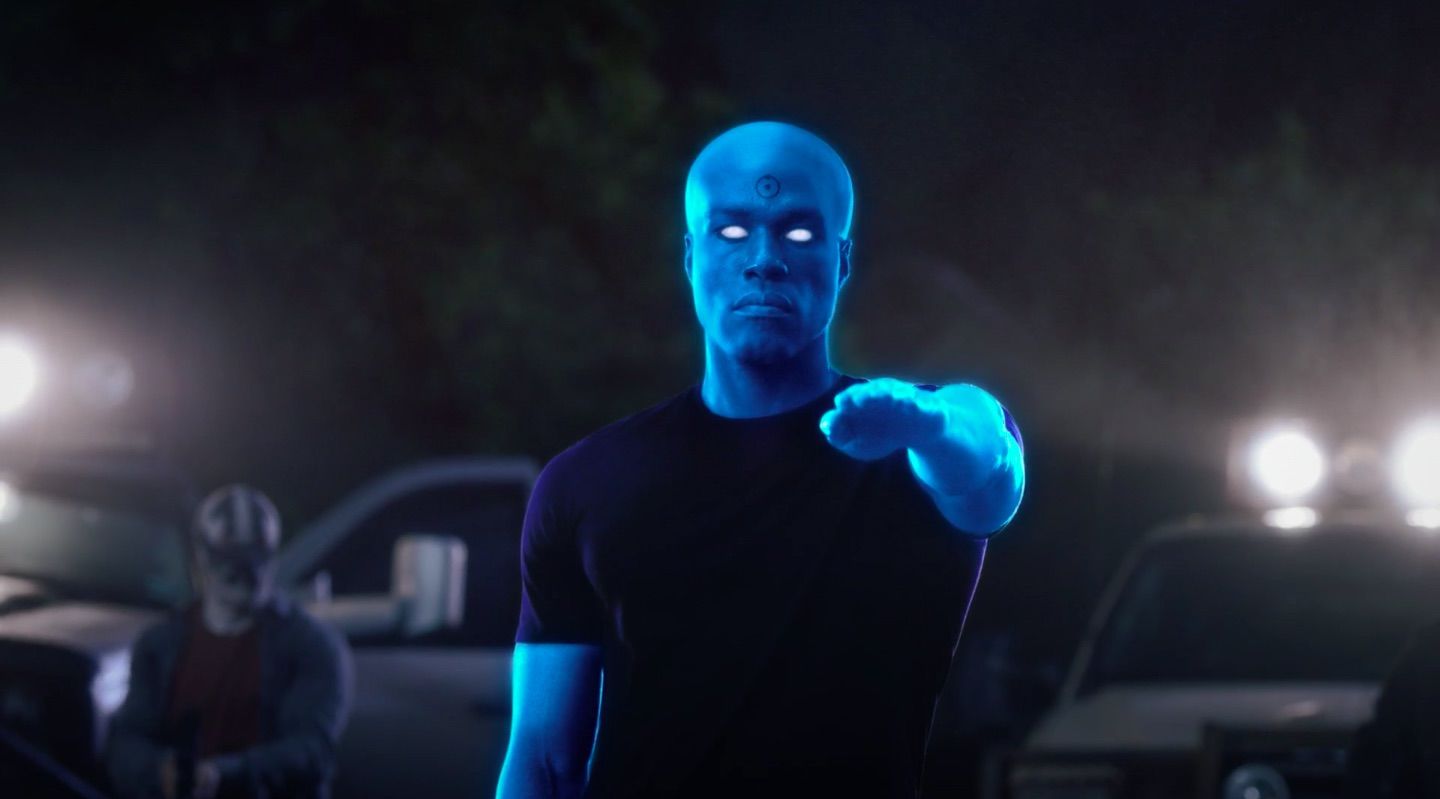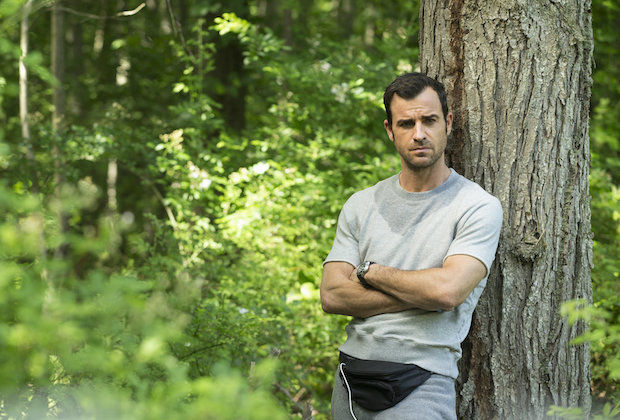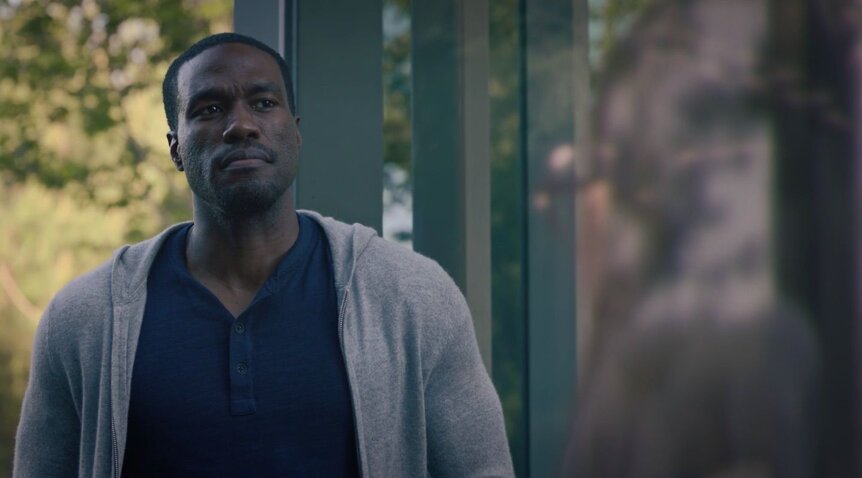Create a free profile to get unlimited access to exclusive videos, sweepstakes, and more!
The equal opportunity nudity in Watchmen and The Leftovers

"There's an incredible disproportion between naked women and naked men on television," The Leftovers and future Watchmen showrunner Damon Lindelof noted in a 2017 interview. Since pledging to address the disparity, Lindelof has made good on his word in the depiction of the very blue and very naked Dr. Manhattan (Yahya Abdul-Mateen II) in last year's excellent Watchmen television adaptation.
Certain expectations are placed on a show airing on HBO, which prides itself on attracting the best creative teams to tell stories that are not restricted by the Standards and Practices of network television. Audiences anticipate sex, violence, and profanity within the framework of these narratives because these productions are not privy to the same FCC constraints. However, not all explicit content is created equal and as we celebrate the Merry Month of Bae, now is a good time to look back at how this representation has shifted for the better over the last five years.
Eye-catching headlines begging to be read, such as "That Is Not My Penis" and "Inside Watchmen's Surprising Full-Frontal Male Nudity" reveals that Dr. Manhattan is still in possession of one of the most debated packages in pop culture. We are still not at a point where scenes like this are the norm, which ensures headlines discussing these moments will use language guaranteeing the most amount of clicks.
When it was announced that Lindelof would be producing a sequel of sorts to Alan Moore and Dave Gibbons' iconic graphic novel, the appearance of the god-like figure was kept secret. Set 30 years after the events in the original story, Dr. Manhattan is said to be living in exile on Mars (where he also spends time in the graphic novel). His big blue form is teased early on, first in a play written by Adrian Veidt (Jeremy Irons) and performed by the clones who tend to his every whim. "The Watchmaker's Son" is stuffed with Easter eggs for fans of the source material, including Dr. Manhattan's aversion to underwear.
After Episode 2: "Martial Feats of Comanche Horsemanship," interviews with Tom Mison (who plays the many Phillips clones) discussed the big blue D, including the body-double casting process (in which he got to choose who would represent his blue-painted naked self). Dr. Manhattan's naked form isn't because he is embracing exhibitionism, rather he no longer adheres to human concepts like clothes or shame — he makes exceptions at events like funerals — and both Zack Snyder's relatively faithful (discounting the final sequence) 2009 adaptation and Lindelof's version do the same. Normalizing male nudity via a god-like figure with blue skin might not seem like the most conventional choice. Nevertheless, Watchmen notably shifts the balance in its depictions of the naked body with more men than women baring all. Game of Thrones, this is not.
Female desire is also represented via the second reference to Dr. Manhattan's impressive squid monster. His ex Laurie (Jean Smart) has packed essentials for her trip, which includes what can be best described as a big blue dildo. Everyone deals with breakups differently, but it is clear that Laurie harbors some sort of residual feelings toward her ex-lover via the impressive sex toy. At this early juncture in the series, this scene is the most overt nod to the infamous appendage while also reminding audiences sexuality isn't a tap to be turned off because of age or heartbreak.
"The audience still has a very odd reaction to seeing male genitalia. Yet when they see female genitalia or naked breasts, they're completely nonchalant about it. [So] I'm just the beginning of the vanguard, but I want to normalize male nudity on television," Lindelof explained in the 2017 interview with TVLine while discussing a Leftovers scene from the final season. The Leftovers was an outlier in depicting male full-frontal nudity as it wasn't just background or day players who went all in. Lead Justin Theroux stripped down for sex scenes and whenever he entered the other realm via a bathtub slip and slide, but he didn't go so far to show off his own Guilty Remnant. Lindelof also chatted about this, pointing to the importance of actor preference regardless of gender, "Justin wants to leave something to the imagination. I'd never ask an actor who is uncomfortable doing nudity to do nudity."
The shift didn't happen overnight, but the 2015 TV season was held up as a banner year across premium cable for finally embracing the naked male form. At the time, Game of Thrones had a reputation for showcasing female nudity for window dressing titillation rather than necessary to the storyline or scene. There is a reason why actor Ian McShane succinctly coined a nickname for the show that has stuck, making this quip after he accidentally revealed too much on the spoiler front, "It's only t*ts and dragons" he famously told The Telegraph. Such an eloquent summary that caused further outrage, even though there is some truth to this statement. It is also worth noting that he didn't allude to Jon Snow's Longclaw because while there had been the odd flash of male nudity, it was often PG-13 in comparison.
Once again, enter Damon Lindelof, who in 2015 described the nuanced conversations that took place behind-the-scenes before actor Chris Zylka's full-frontal Leftovers scene, "Sensitivity is important, but the key question I try to ask myself is: Why is there nudity in the scene, and what's it for? In this case, it's being used to express vulnerability. So how much do I need to show before it becomes gratuitous?" The latter stands out because this consideration hasn't always been afforded to actors on other recent shows.
A lot has changed for the better in the five years since Lindelof took part in this discussion, including HBO implementing rules about the mandatory hiring of an intimacy coordinator to create a safe environment when filming sex scenes. A welcome move that rather than restricting creativity will ensure all participants have a voice. This major step will lead to better-regulated sets in which co-stars won't have to stand up for each other. "He took care of me in an environment where I didn't know I needed to be taken care of," Emilia Clarke recalled on an episode of Dax Shepard's Armchair Expert podcast while chatting about Game of Thrones co-star Jason Momoa and shooting sex scenes in Season 1.
Feeling safe on set is paramount, regardless of whether it is for a big action stunt or nudity. It doesn't have to be a sex scene to feel vulnerable, as most of Dr. Manhattan's stripped-down moments are when he is going about everyday business, not when he is working his big blue magic. Actor Yahya Abdul-Mateen II explained in an interview with IndieWire that his comfort was always considered while shooting these scenes. Pointing to the disparity of who typically gets their kit off on TV, he revealed why he felt doing these scenes without a modesty pouch or the speedo option was important, "Nudity on television was one-sided for so long, but times are changing, where it's not that big of a deal and guys are being asked to carry their own weight, if they're willing," noted Abdul-Mateen. "So I said, ‘I think it will be fun,' and I was confident about getting out there and stepping up to the plate. I was really happy with how it all turned out. I think we tried to make sure everything was tasteful — tasteful and comfortable."
Genre shows on HBO, including the aforementioned Leftovers and Watchmen — as well as Westworld — are setting the tone for future productions as to how equal opportunity nudity is being utilized as a part of the wider story. Creating safe working environments via intimacy coordinators is another positive step in reducing unnecessary objectification, regardless of whether it belongs to a human, god-like figure, or robot. A man painted blue might seems like an unlikely choice to normalize male full-frontal nudity, but Dr. Manhattan has looked like this for over 30 years; thankfully, TV is finally catching up.





























